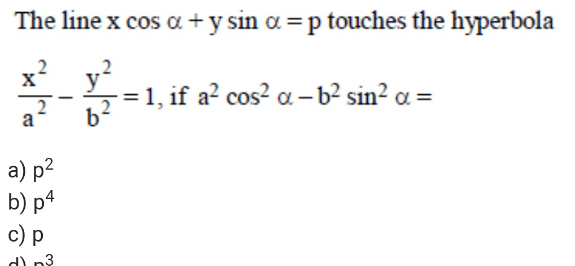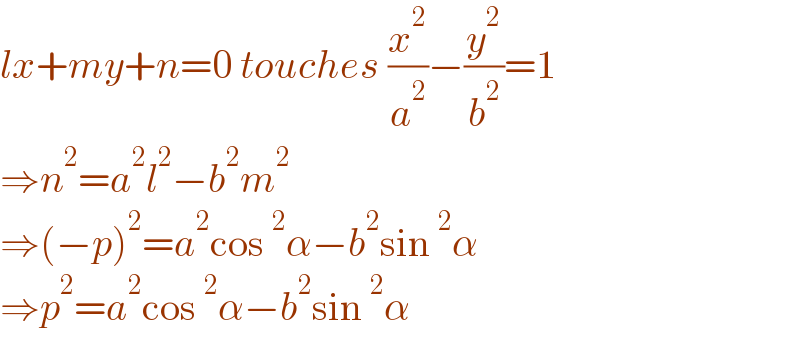Question Number 147108 by alcohol last updated on 18/Jul/21

Answered by som(math1967) last updated on 18/Jul/21

$$\left.{a}\right){p}^{\mathrm{2}} \\ $$
Answered by gsk2684 last updated on 18/Jul/21

$${lx}+{my}+{n}=\mathrm{0}\:{touches}\:\frac{{x}^{\mathrm{2}} }{{a}^{\mathrm{2}} }−\frac{{y}^{\mathrm{2}} }{{b}^{\mathrm{2}} }=\mathrm{1} \\ $$$$\Rightarrow{n}^{\mathrm{2}} ={a}^{\mathrm{2}} {l}^{\mathrm{2}} −{b}^{\mathrm{2}} {m}^{\mathrm{2}} \\ $$$$\Rightarrow\left(−{p}\right)^{\mathrm{2}} ={a}^{\mathrm{2}} \mathrm{cos}\:^{\mathrm{2}} \alpha−{b}^{\mathrm{2}} \mathrm{sin}\:^{\mathrm{2}} \alpha \\ $$$$\Rightarrow{p}^{\mathrm{2}} ={a}^{\mathrm{2}} \mathrm{cos}\:^{\mathrm{2}} \alpha−{b}^{\mathrm{2}} \mathrm{sin}\:^{\mathrm{2}} \alpha \\ $$
